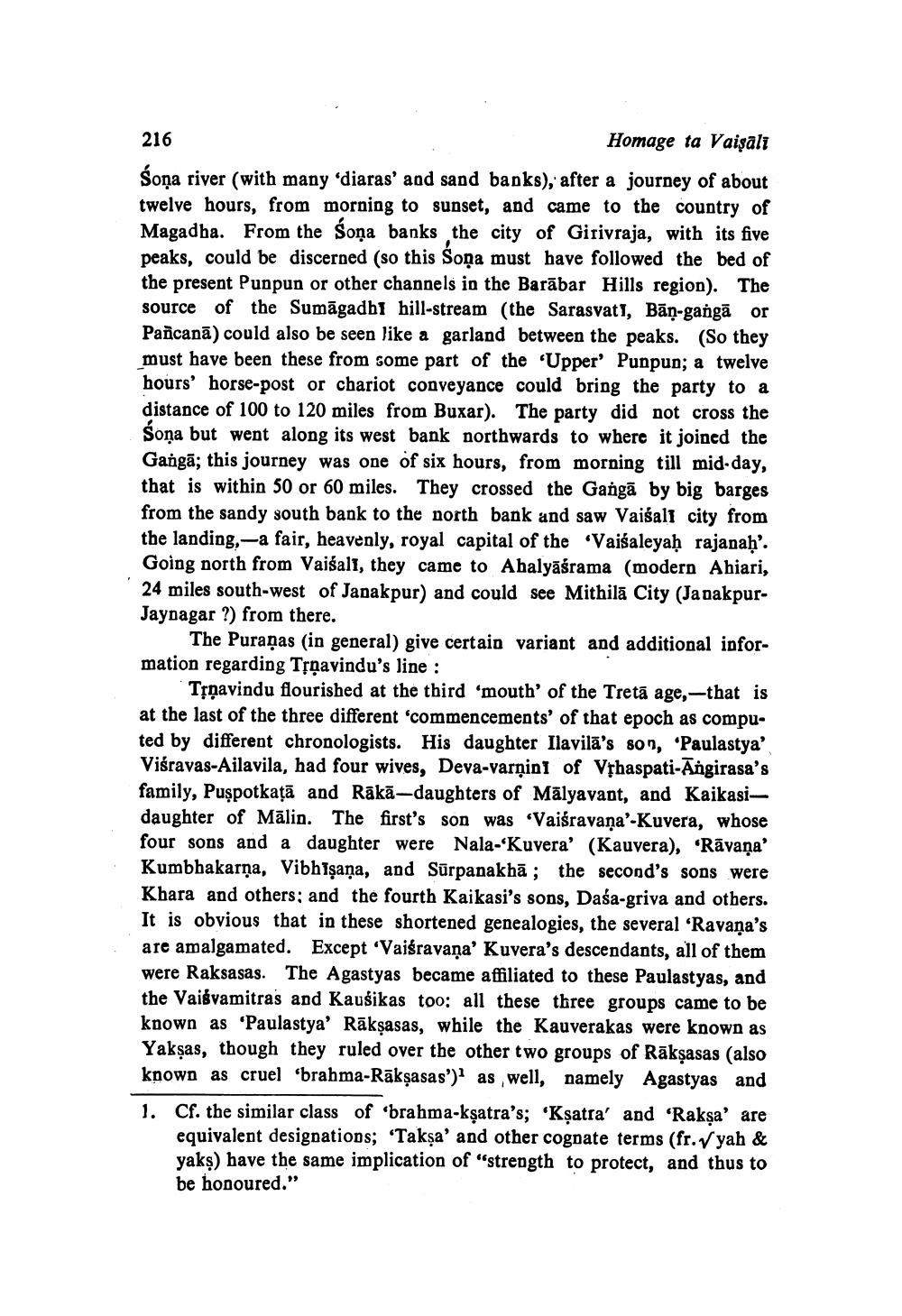________________ 216 Homage ta Vaisali Sona river (with many 'diaras' and sand banks), after a journey of about twelve hours, from morning to sunset, and came to the country of Magadba. From the sona banks the city of Girivraja, with its five peaks, could be discerned (so this Sona must have followed the bed of the present Punpun or other channels in the Barabar Hills region). The source of the Sumagadbi hill-stream (the Sarasvati, Ban-ganga or Pancana) could also be seen like a garland between the peaks. (So they must have been these from some part of the Upper' Punpun; a twelve hours' horse-post or chariot conveyance could bring the party to a distance of 100 to 120 miles from Buxar). The party did not cross the Sona but went along its west bank northwards to where it joined the Ganga; this journey was one of six hours, from morning till mid-day, that is within 50 or 60 miles. They crossed the Ganga by big barges from the sandy south bank to the north bank and saw Vaisali city from the landing,-a fair, heavenly, royal capital of the 'Vaisaleyah rajanah'. Going north from Vaisali, they came to Abalyasrama (modern Abiari, 24 miles south-west of Janakpur) and could see Mithila City (JanakpurJaynagar ?) from there. The Puranas (in general) give certain variant and additional information regarding Trnavindu's line : Trpavindu flourished at the third 'mouth' of the Treta age, -that is at the last of the three different commencements' of that epoch as computed by different chronologists. His daughter Ilavila's son, 'Paulastya' Visravas-Ailavila, had four wives, Deva-varnint of Vphaspati-Angirasa's family, Puspotkata and Raka-daughters of Malyavant, and Kaikasidaughter of Malin. The first's son was "Vaisravana'-Kuvera, whose four sons and a daughter were Nala-Kuvera' (Kauvera), 'Ravana' Kumbhakarna, Vibhisana, and Surpanakha; the second's sons were Khara and others, and the fourth Kaikasi's sons, Dasa-griva and others. It is obvious that in these shortened genealogies, the several 'Ravana's are amalgamated. Except "Vaisravana' Kuvera's descendants, all of them were Raksasas. The Agastyas became affiliated to these Paulastyas, and the Vaisvamitras and Kausikas too: all these three groups came to be known as Paulastya' Raksasas, while the Kauverakas were known as Yaksas, though they ruled over the other two groups of Raksasas (also known as cruel 'brahma-Raksasas')) as well, namely Agastyas and 1. Cf. the similar class of 'brahma-ksatra's; 'Ksatra' and 'Raksa' are equivalent designations; 'Taksa' and other cognate terms (fr.Vyah & yaks) have the same implication of "strength to protect, and thus to be honoured."




